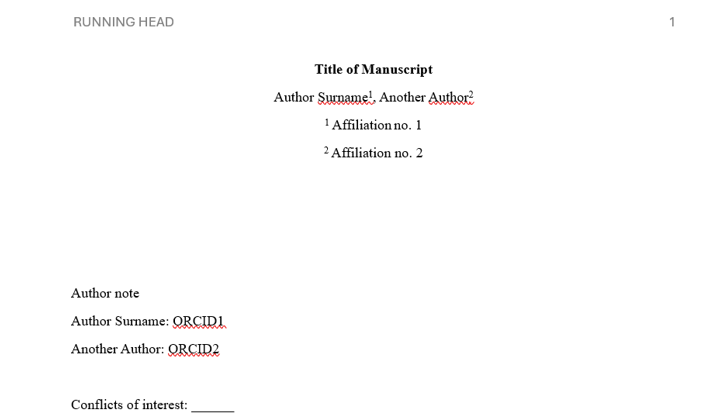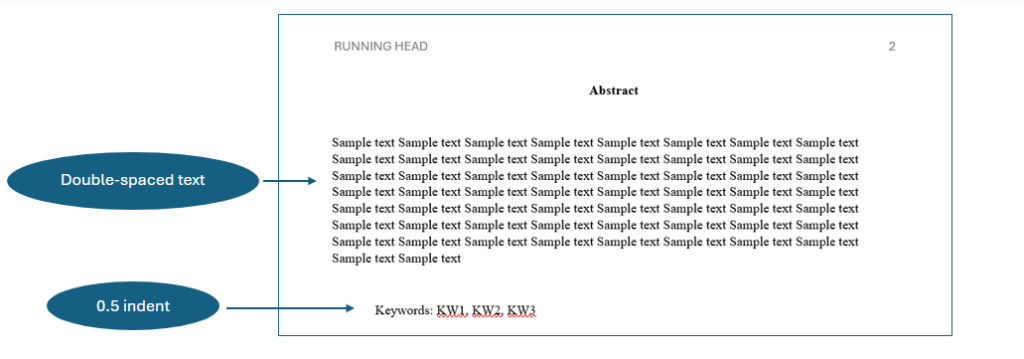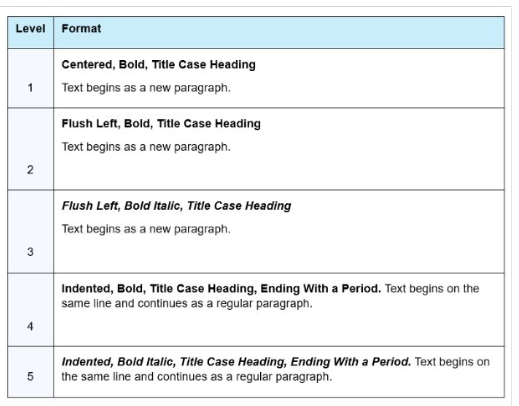Table of Contents
What is APA 7th Edition?
The American Psychological Association (APA) introduced the latest edition of the APA Style Manual (i.e., APA 7th edition) in 2019. APA Style has its origins in 1929, when a group of academics and professionals decided to develop a set of guidelines that would standardize scientific writing. The earliest form was a seven-page guide published in the Psychological Bulletin. The first formal edition of the APA Publication Manual was published in 1952, with subsequent editions appearing in 1974, 1983, 1994, 2001, 2009, and most recently, in 2019.
Over the years, the APA style guide has evolved considerably to meet the changing needs of a wide range of disciplines, from social and behavioral sciences to health care, natural sciences, and humanities. APA Style is widely used by academic journals and books.
As APA 7th edition is the current and most updated version, students and researchers should familiarize themselves with the style guidelines, including the reference and citation styles.
Who Should Use APA 7th Edition?
The aim of style guides such as the APA Style Guide is to simplify the work of editors and make it easier for readers to understand a text by ensuring a uniform format for a given publication. For example, the APA Style Guide will contain guidelines that lay down the APA reference format and APA style citation for authors to follow.
The APA Style Guide can be a valuable reference when writing and formatting academic papers, irrespective of discipline. However, this style is primarily used by professionals, researchers, and students in the social sciences (e.g., sociology, psychology, anthropology), behavioral sciences, education, business, and nursing.
If you are a student, you may consult with an instructor to check what style your discipline uses before using APA Style in your work. Most importantly, be sure to check the guidelines of your university or the journal you plan to publish in to ensure APA 7th edition is the correct style to use.
APA In-text Citations
Researchers rely on citations and references to give credit to original sources, support their arguments, and guide readers to additional information for further study. Let us now look at how to cite sources in APA format. The formatting requirements of APA 7th edition citation for referring to secondary sources in your text are as follows.
The APA citation format includes the author’s last name and the year of publication. When referring to a particular part of a source, the page number may be included, e.g., “(Rawat et al., 2018, p. 115).”
APA style citation in the text may be parenthetical or narrative.
In parenthetical citation, the author’s name and the year of publication are placed in parentheses within the text. This style is used at the end of a sentence. See below for an example:
- Gender, age, education, and income determine a person’s risk and adaptive capacities (Birkmann et al., 2022).
In narrative citation, the author’s name appears as a part of the sentence, followed by the publication year in parentheses. See below for an example:
- Birkman et al. (2022) note that gender, age, education, and income determine a person’s risk and adaptive capacities.
 APA 7th edition citation is not so simple when it comes to a source with several authors or an organization as an author (Table 1) or when some information is not available (Table 2).
APA 7th edition citation is not so simple when it comes to a source with several authors or an organization as an author (Table 1) or when some information is not available (Table 2).
Table 1: How to cite sources in APA format when there are multiple authors and organizations as authors
| Author(s) | Parenthetical citation | Narrative citation |
| 1
|
(Sinha, 2022) | Sinha (2022) |
| 2
|
(Latimer & Schulz, 1999) | Latimer and Schulz (1999) |
| ≥3
|
(Khatri et al., 2023) | Khatri et al. (2023) |
| Organization as an author* | (WHO, 2016)
|
WHO (2016) |
*First time with an abbreviation: (World Health Organization [WHO], 2016); all subsequent citations: (WHO, 2016)
Table 2: How to cite sources in APA format when some information is missing
| Missing detail | What to do | APA style citation | APA reference format |
| Author | Use the title of the source in title case
|
(FAQs, 2004) | FAQs. (2004) Crazy Camp Chronicles. http://www.crazycamps/faq |
| Date
|
Use “n.d.” (for no date) | (Kalanithi, n.d.) | Kalanithi, O. (n.d.). The curious case of the coughing cloud. Merriweather Publishing. |
| Page number
|
Use an alternative locator | (Williams, 1988, Chapter 14)
(Bush, 2021, para. 2) |
(no change to reference format) |
| Title
|
Describe the source | (Gupta, 2023)
(no change to citation style) |
Gupta, G. (2023). [Collection of patient feedback for a new therapy]. Unpublished raw data. |
APA Reference Format
After APA citations, let us now look at the APA reference format. As an academic, you might use a wide array of source types. According to the APA style guide, each type is formatted in a certain manner. The most commonly used sources are journal articles, books, and dissertations. However, you occasionally might need to cite webpages, podcasts, and news article. How would all these appear in an APA 7 reference page? You will find your answers in Table 3!
Table 3: How to format various sources in the APA reference list
| Source type | Reference list format | Example |
| Journal article | Author, A. A. (Year of Publication). Title of the article. Title of the Journal, volume number(issue number), pages. https://doi.org/xx.xxx/yyyy | Singh, C., Solomon, D., & Rao, N. (2021). How does climate change adaptation policy in India consider gender? An analysis of 28 state action plans. Climate Policy, 21(7), 958-975. https://doi.org/10.1080/14693062.2021.1953434
|
| Book | Author, A. A. (Year of Publication). Title of the book: Subtitle (editors, translators, editions, etc.). Publisher.
|
Angelou, M. (1970). I know why the caged bird sings. Random House.
|
| Chapter in an edited book | Author, A. A. (Year). Chapter title. In Initial. Last name (Eds.), Book title (ed., pages of chapter). Publisher. DOI of chapter | Saxena, R. K., Saxena, K. B., & Varshney, R. K. (2019). Pigeonpea (Cajanus cajan L. Millsp.): an ideal crop for sustainable agriculture. In J. M. Al-Khayri, S. M. Jain, D. V. Johnson (Eds.), Advances in Plant Breeding Strategies: Legumes: Volume 7, Springer, Cham. https://doi.org/10.1007/978-3-030-23400-3_11409-429.
|
| Webpage | Author, A. A. (Year, Month Day). Title of webpage. Website name. URL | Center for Systems Science and Engineering (CSSE). (n.d.). COVID-19 Map. Johns Hopkins University. Retrieved July 13, 2022, from https://coronavirus.jhu.edu/map.html
|
| Dissertation/Thesis | Author, A. A. (Year of Publication). Title of dissertation/thesis [Master’s thesis/Doctoral dissertation, Name of institution]. URL or database name | Srinidhi, A. (2024). Advancing climate resilient development for semi-arid farming systems in India. [internal PhD, WU, Wageningen University]. Wageningen University. https://doi.org/10.18174/654556 |
| News article | Author, A. A. (Year, Month Day). Title of the article. Title of the Newspaper. URL | Das, S. (2024, August 20). Auto companies Tata Motors, Ashok Leyland board the fully built bus boom. Business Standard. https://www.business-standard.com/industry/auto/auto-companies-seeing-rising-demand-for-fully-built-buses-post-covid-19-124081800083_1.html
|
| Podcast episode | Host, A. A. (Host). (Year, Month Day). Title (episode number if known) [Audio podcast episode]. In Title of podcast. Publisher. URL | Huberman, A. (Host). (2022, April 17). Using light (sunlight, blue light & red light) to optimize health [Audio podcast episode]. In Huberman Lab Podcast. Andrew Huberman. https://www.hubermanlab.com/episode/using-light-sunlight-blue-light-and-red-light-to-optimize-health
|
Formatting the APA Paper
Papers formatted according to APA 7th edition typically contain the following elements:
Title page with the title (bold, centered), running head and page number in the header, author names and affiliations, and author notes (ORCID ID, conflicts of interest, etc.); see below:

Next comes the abstract. It should be double spaced and use consistent font. The keywords appear below the abstract, with an indent.

For the main text, margins are 1 inch on all four sides. The text is double spaced. The font used should be consistent. Headings are used to separate sections, and details on heading levels are as follows:

Source: https://apastyle.apa.org/style-grammar-guidelines/paper-format/headings
Finally, the APA 7 reference page contains the references to all sources used in the paper. References are double-spaced and use hanging indents:
 Key Takeaways
Key Takeaways
Style guides in academic writing serve to standardize formatting, citations, and language use across scholarly works. They provide readers with cues they can use to follow the text more efficiently and to locate information of interest to them. In other words, it avoids distraction of unfamiliar or non-uniform formatting.
In this piece about APA 7th edition, we have explained in detail the nuances of APA citations, including how to cite in APA format and how to format the APA 7 reference page. A brief primer on formatting a manuscript in line with APA 7th edition is also provided.
Frequently Asked Questions
- What are the major changes from APA 6th to APA 7th Edition?
The updates from APA 6th to APA 7th Edition reflect a commitment to improving clarity, inclusivity, and usability in scholarly writing. The salient differences from APA 6th edition are as follows:
- Title page format: The title page has been updated for professionals. The author note includes information such as ORCID IDs and conflict of interest disclosures.
- Running head: The running head format has been simplified for professional authors.
- Font flexibility: There is greater flexibility in font specifications to enhance accessibility.
- Bias-free language guidelines: The guidelines for bias-free language have been updated to promote inclusivity and respect when writing about various identities.
- Reference formatting: In APA 7th edition, the number of authors included in a reference entry has changed to allow up to 20 authors before using an ellipsis. The presentation of DOIs and URLs has been standardized.
- In-text citations: In-text citations for works with three or more authors have been simplified to include only the first author’s name followed by “et al.”
- Accessibility: APA 7th edition emphasizes accessibility for users with disabilities, ensuring that guidelines support various modalities, including screen readers.
- How do I cite a journal article in APA 7th Edition?
According to APA 7th edition, a reference would appear as below:
Author, A. A. (Year of Publication). Title of the article. Title of the Journal, volume number(issue number), pages. https://doi.org/xx.xxx/yyyy.
The in-text citation would include the author name(s) and year of publication, e.g., (Andriolatou, 2007).
- How should multiple authors be cited in APA 7th Edition?
APA 7 citation style would vary depending on the number of authors and whether you are citing the source parenthetically or narratively:
Single author, parenthetical: (Bik, 2020)
Single author, narrative: Bik (2020) reported that…
Two authors, parenthetical: (Bik & Urs, 2019)
Two authors, narrative: As demonstrated by Bik and Urs (2019), …
Three or more authors, parenthetical: (Bik et al., 2023)
Three or more authors, narrative: Bik et al. (2023) have published…
- How do I format in-text citations for a direct quote?
When someone else’s words are copied verbatim in your paper, it refers to a direct quote.
For APA 7 citation of short direct quotes (<40 words), use quotation marks around the quote and cite the author, year, and page number:
Another way to look at it is how people “get a broader range of experience than they would on a feature” (Catmull, 2014, p. 209).
For APA 7 citation of longer quotes, or block quotes, the sentence preceding the quote ends in a colon and is followed by the quoted text. No quotation marks are used. The quote is indented and cited without a period at the end (see the figure below).

Figure: How to cite block quotes in APA citations
To conclude
Over the years, the APA style guide has evolved significantly. The current version, APA 7th edition, has expanded in both scope and size to accommodate the needs of wide-ranging fields and to address changing times. Despite these changes, the core intention—to provide clear, consistent guidelines for effective communication—remains at the heart of APA Style.
For busy researchers, not only is it difficult to remember the different elements of citations and references and the subtle differences in formatting, but it also a tedious task to manually format in-text citations and reference lists and ensure consistency between them. In addition, you might need to format (and even re-format) your manuscript according to different journals, which might follow styles different from APA 7th edition (MLA, Chicago, AMA, etc.)! But there is no need to worry…help is at hand!
Citation generators are online tools that format references in different styles. There are a number of citation generators available, and Paperpal has launched its new citation generator, which stands out from the others in many ways. As a part of Paperpal’s writing workflow, you can easily find and cite sources accurately in a matter of seconds.
This free citation generator supports the updated recent versions of 10,000+ styles, including APA 7th edition. Therefore, it can serve as an APA 7th edition citation generator if you need one! What’s more, you don’t need to switch between multiple tools to search, save, or format your citations. You can rely Paperpal’s citation generation feature for help with citing sources accurately and consistently in your writing. Explore Paperpal for free now!
Paperpal is a comprehensive AI writing toolkit that helps students and researchers achieve 2x the writing in half the time. It leverages 21+ years of STM experience and insights from millions of research articles to provide in-depth academic writing, language editing, and submission readiness support to help you write better, faster.
Get accurate academic translations, rewriting support, grammar checks, vocabulary suggestions, and generative AI assistance that delivers human precision at machine speed. Try for free or upgrade to Paperpal Prime starting at US$19 a month to access premium features, including consistency, plagiarism, and 30+ submission readiness checks to help you succeed.
Experience the future of academic writing – Sign up to Paperpal and start writing for free!





